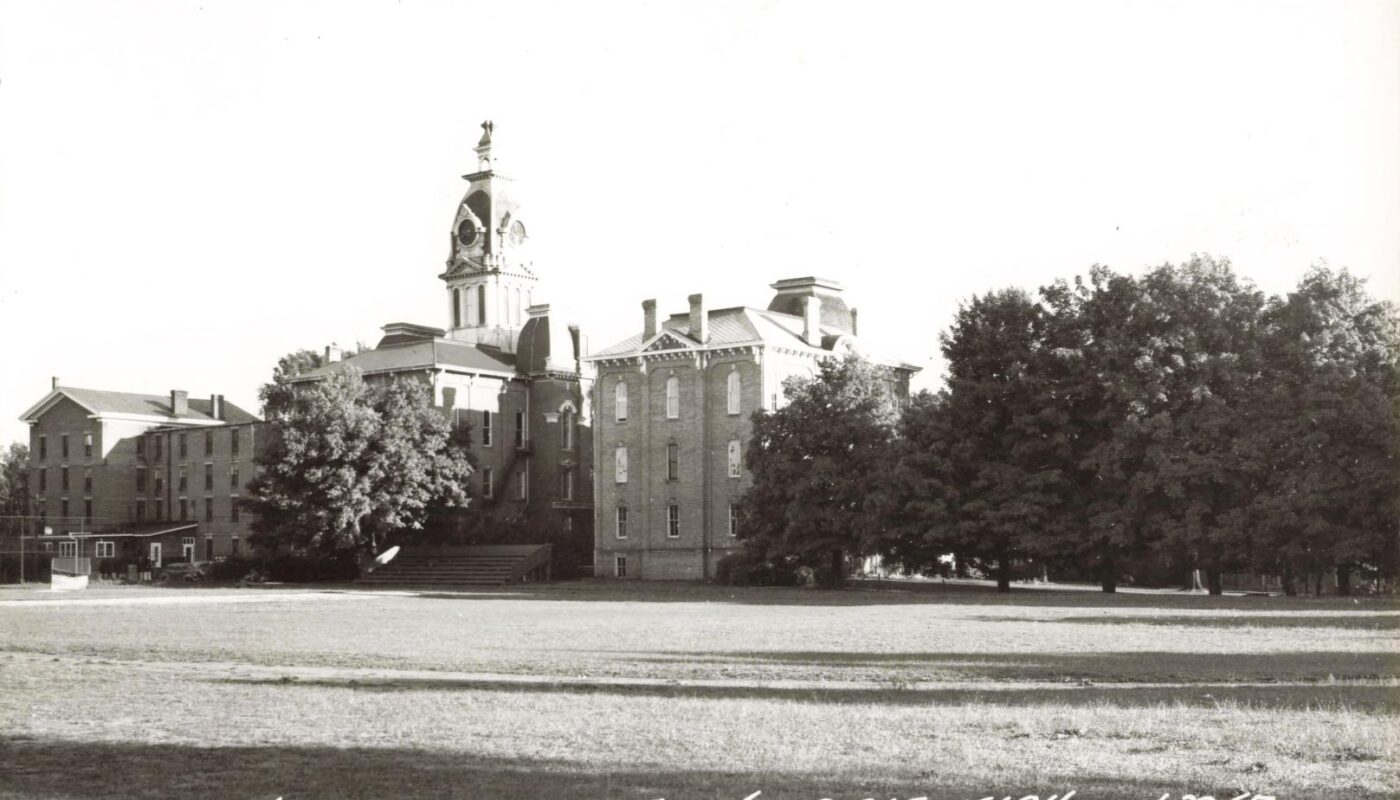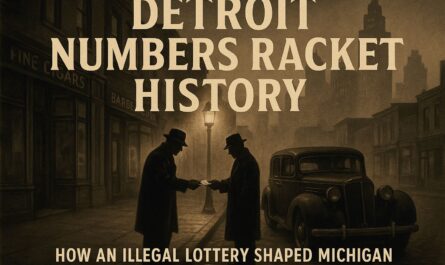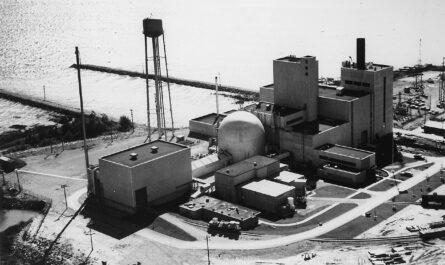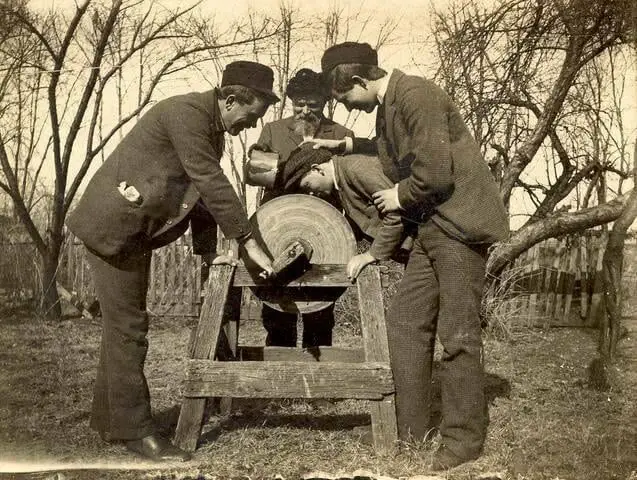The history of Hillsdale, Michigan, in the early 20th century comes alive through a remarkable set of images showing the fairgrounds, downtown streets, and the factories that powered the local economy. These photographs offer a window into a time when Hillsdale was both a thriving market town and a center of manufacturing in southern Michigan.
Video – Hillsdale, Michigan in the early 1900s
Step back to early 20th-century Hillsdale, Michigan, in this Michigan Moments feature. Rare photographs bring to life a community defined by its fairgrounds, busy Howell Street, and thriving industries like F.W. Stock & Sons Flour Mill. See how Hillsdale College shaped the town’s culture, leading the nation in educational equality and resisting segregation long before it was common.
From the cheers of harness races to the hum of the flour mill and the steady growth of a respected liberal arts college, Hillsdale’s story is one of progress, pride, and community spirit. This short documentary captures the people, places, and events that made Hillsdale a vibrant hub in southern Michigan.
The County Fairgrounds – The Pride of Hillsdale
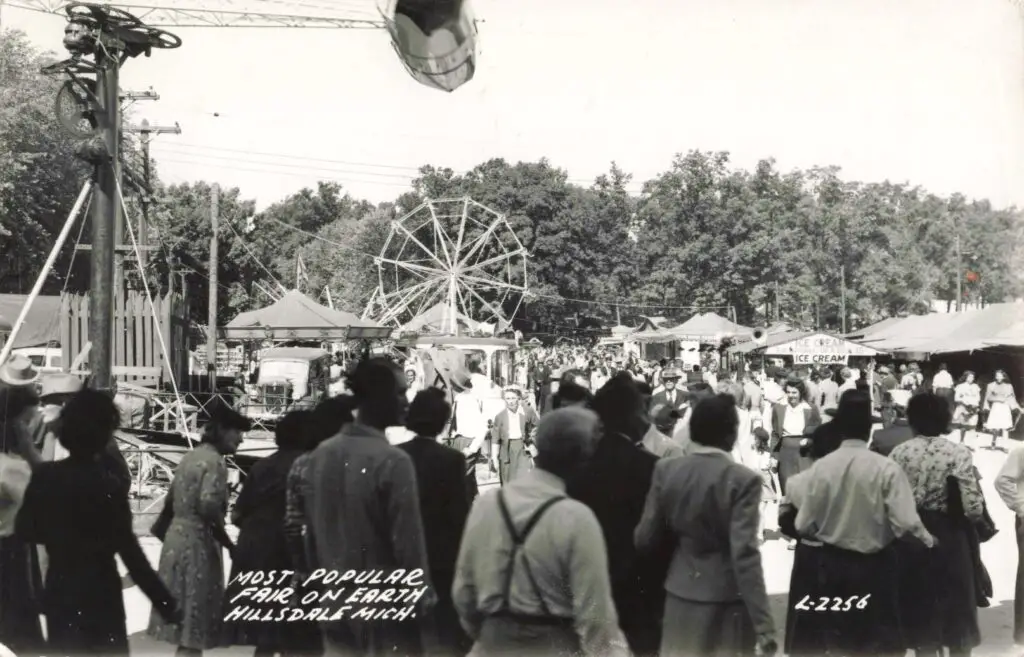
For generations, the Hillsdale County Fair was the biggest event of the year. The fairgrounds, with their oval racetrack and grandstand, hosted horse harness races that drew large crowds from neighboring counties. Families came to show their livestock, admire farm machinery, and enjoy the carnival rides. The midway brought bright lights and excitement to an otherwise quiet rural county. In the early 1900s, fair week meant downtown stores stayed open late, hotels filled with visitors, and the roads leading into town were busy with wagons and the first automobiles.
Downtown Howell Street – The Business Heart

Historic photographs of Howell Street show a bustling commercial district. Merchants sold dry goods, hardware, and groceries to residents and farmers. Horse-drawn delivery wagons shared the road with Model T Fords.
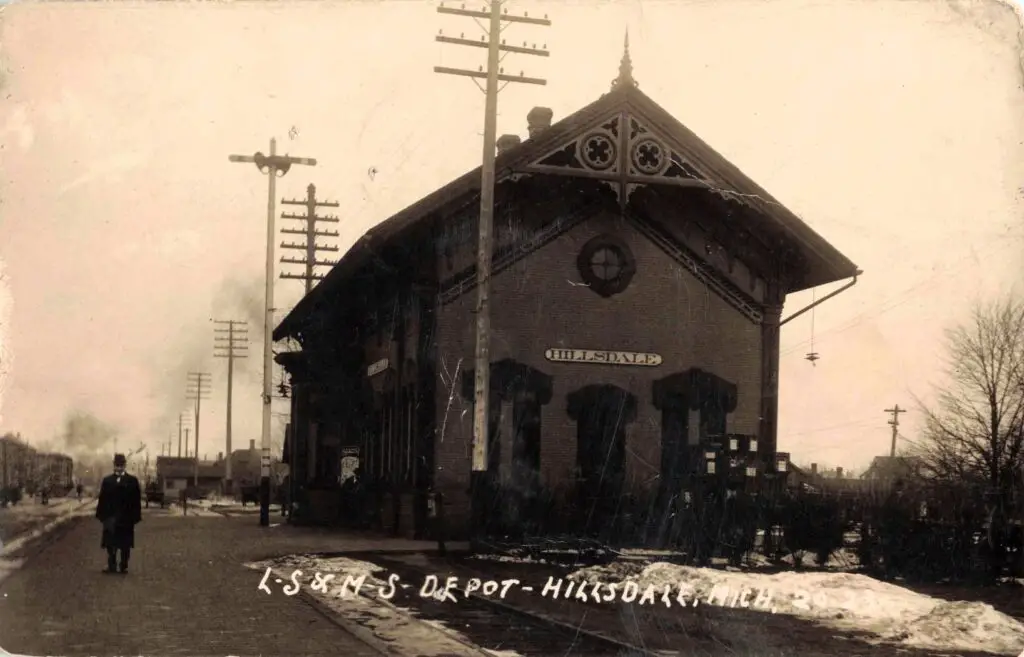
Public buildings like the courthouse and post office stood as symbols of civic pride. Storefront awnings shaded pedestrians in summer, while prominent signs advertised everything from harness fittings to household goods. These blocks of brick buildings formed the social and economic heart of the community.
The depot for the Lake Shore and Michigan Southern Railway (L.S. & M.S.) was a major rail line in the late 19th and early 20th centuries that connected Buffalo, New York, to Chicago, Illinois, running through northern Ohio, Indiana, and southern Michigan.
Industry and Innovation
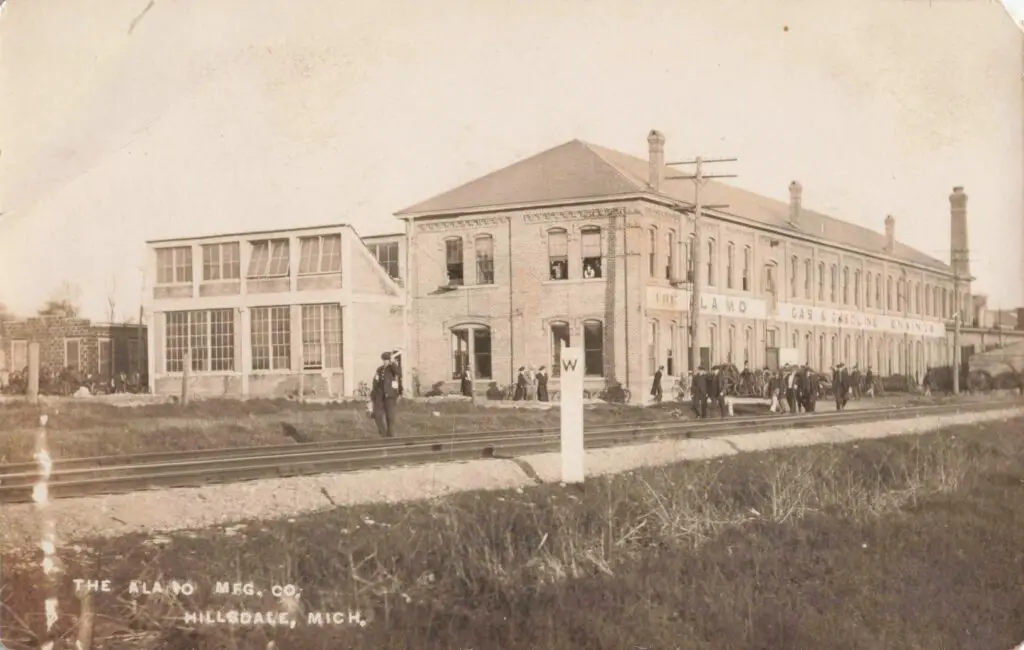
The history of Hillsdale Michigan includes a strong tradition of manufacturing. The Alamo Manufacturing Company was known for producing gas and gasoline engines used on farms and in small factories. These engines powered equipment that transformed agriculture in the region.
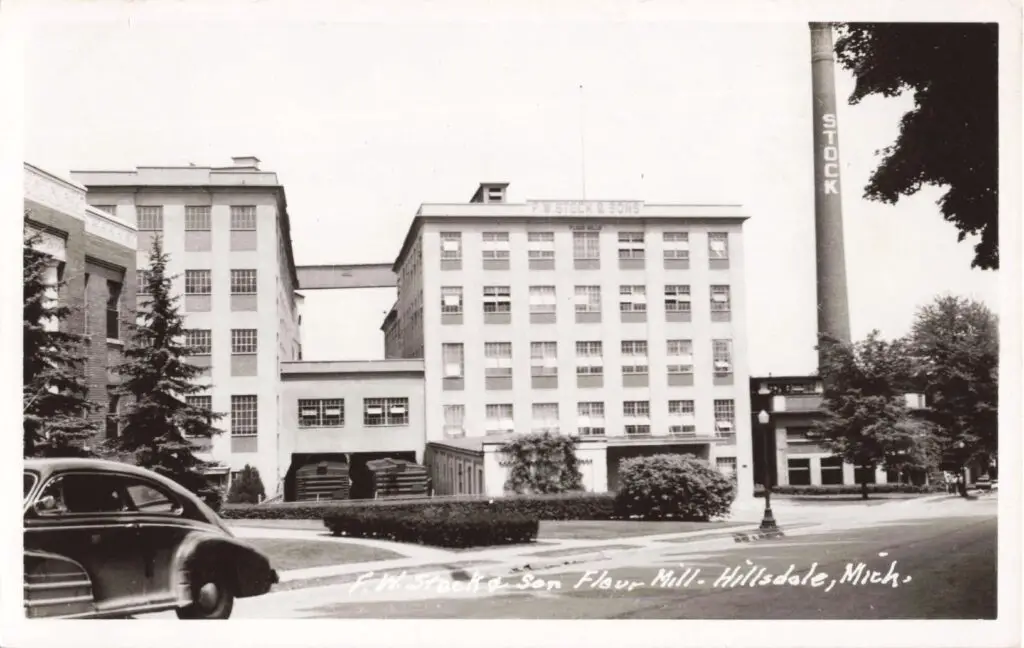
Another major employer was F.W. Stock & Sons Flour Mill, whose tall buildings and smokestack dominated the skyline. The mill’s products were shipped far beyond Hillsdale County, helping to connect the town to wider markets.
Mill Origins and Founding
This grist mill that would become Stock’s Mill began in 1838, built by John Cook and Chauncey Ferris on the St. Joseph River. Initially modest, the mill used a water wheel and primitive machinery to grind grain for early settlers.
In 1869, Frederick W. Stock purchased the mill while it was in disrepair. He invested in improvements, replacing the mill’s water race, installing modern steam engines, and upgrading the machinery. Within eight years, he patented “Stock’s Patent Flour,” known for its consistent fine texture and white purity.
Power and Progress
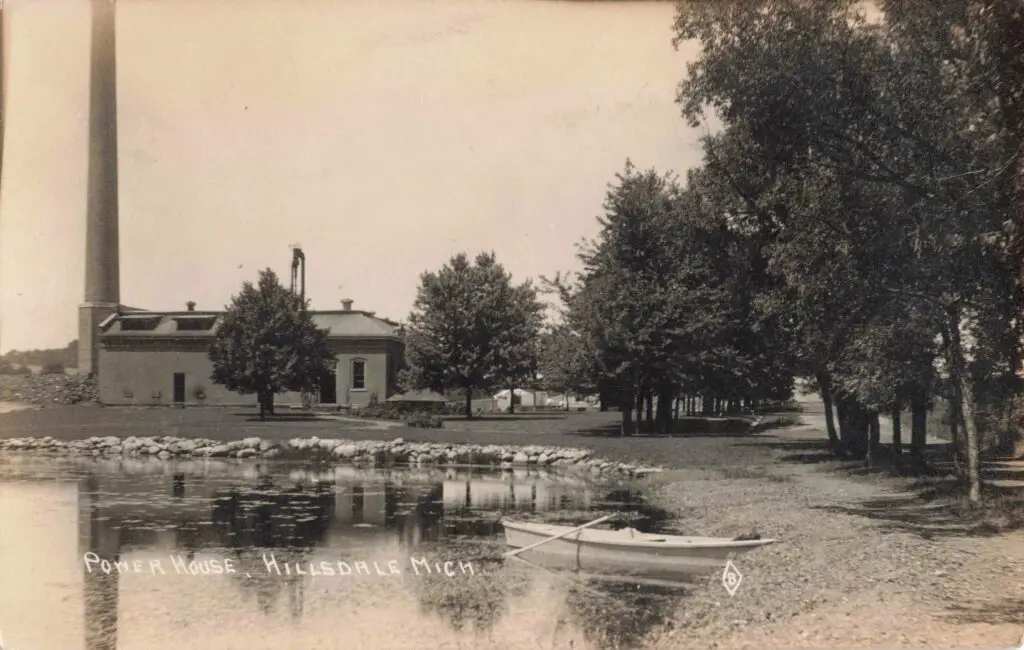
The local power house provided electricity and steam heat, an essential step in Hillsdale’s modernization. This facility helped bring electric lighting to homes, businesses, and public spaces. It also supported industrial growth by providing reliable power for factories and mills.
A Connected Community
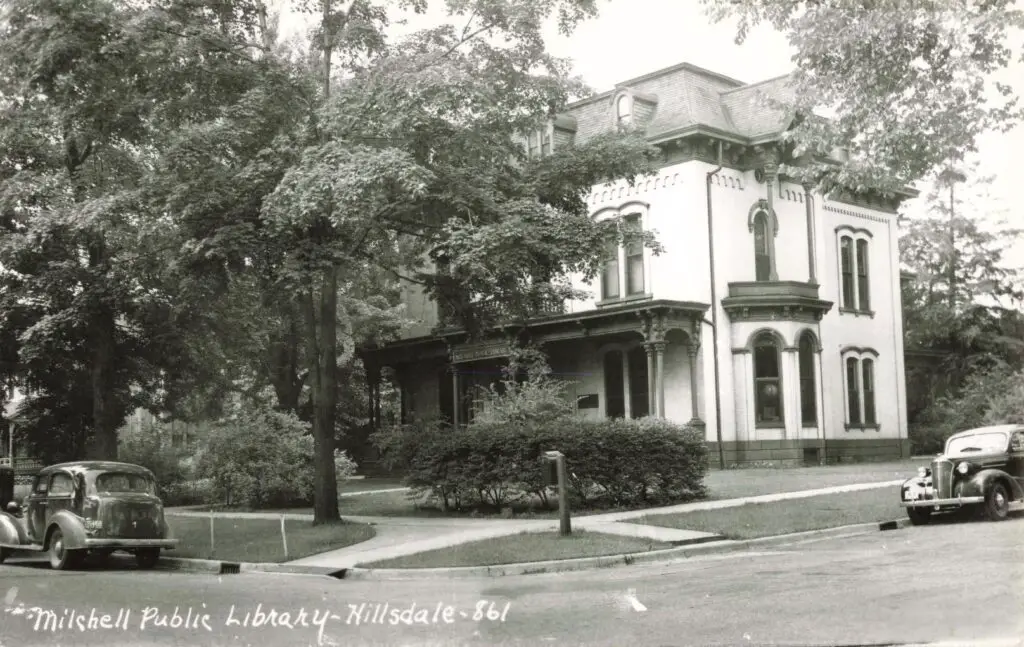
Hillsdale’s neighborhoods reflected the prosperity of the time. Tree-lined streets and well-kept homes surrounded the business district. The Mitchell Public Library was a local resource for world knowledge. Churches played an important role in community life, hosting socials, fundraisers, and holiday events. On weekends, families could be found along the lakefront or visiting the fairgrounds.
Preserving Hillsdale’s Heritage
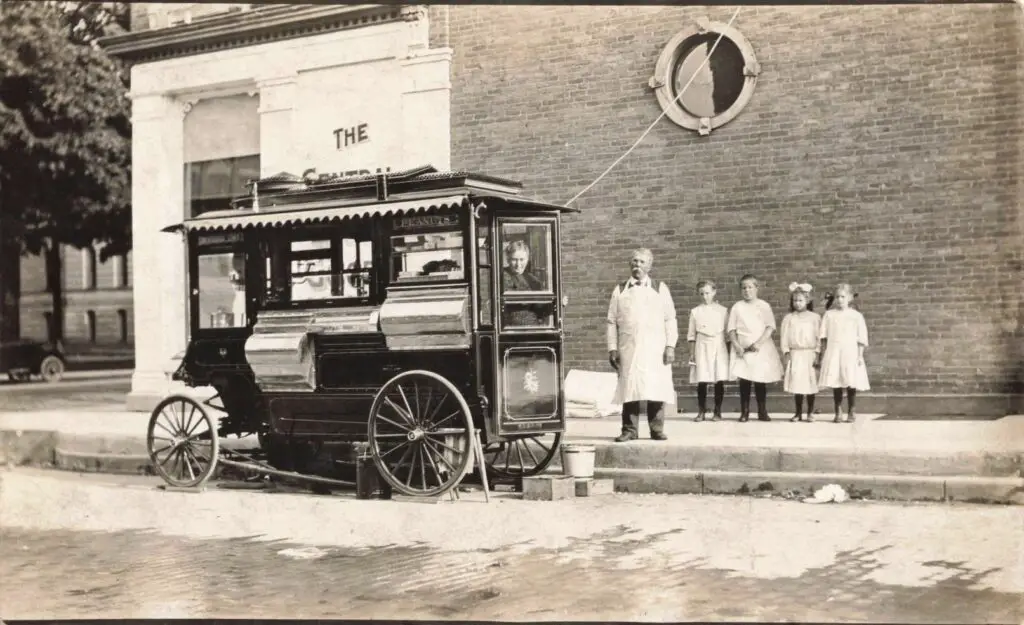
Today, these vintage photographs give us a clearer understanding of how Hillsdale looked and functioned during its early years of growth. They reveal a balance between small-town life and industrial ambition. While much has changed, the buildings, fairgrounds, and community spirit remain part of Hillsdale’s identity.
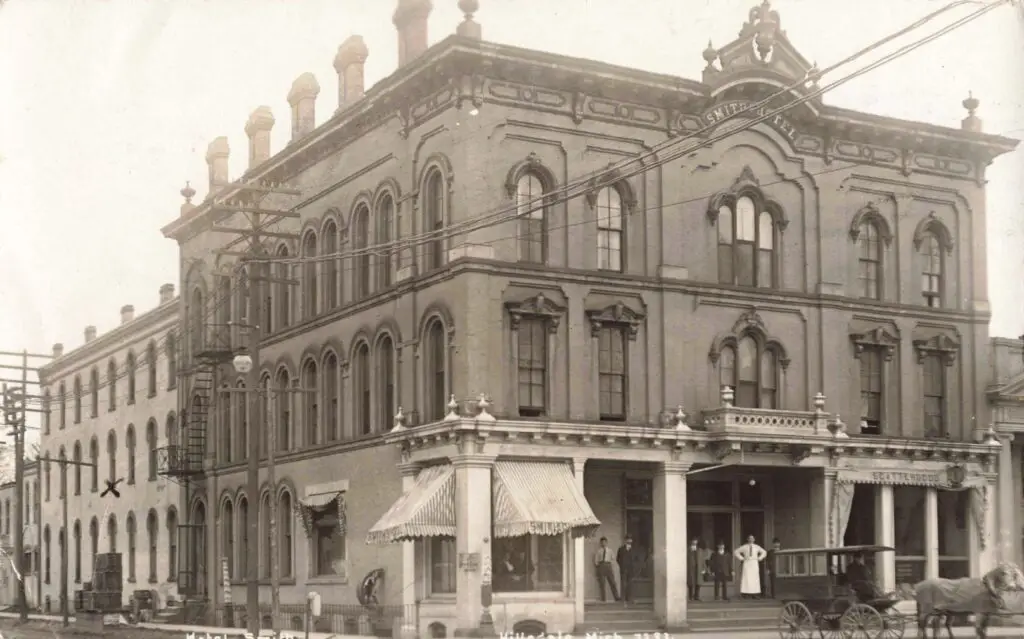
The history of Hillsdale Michigan is more than just a list of dates and names. It’s the story of a community that worked hard, celebrated together, and adapted to new technologies and opportunities. These images remind us of what life was like when the fairgrounds ruled the county calendar and the hum of machinery was part of the daily soundtrack.
